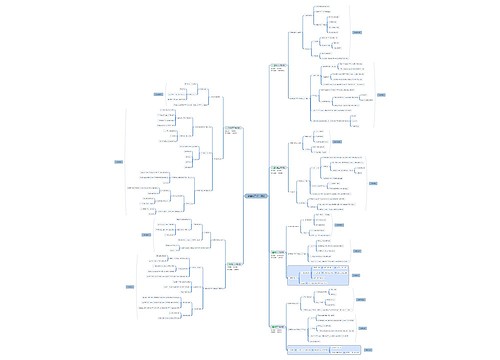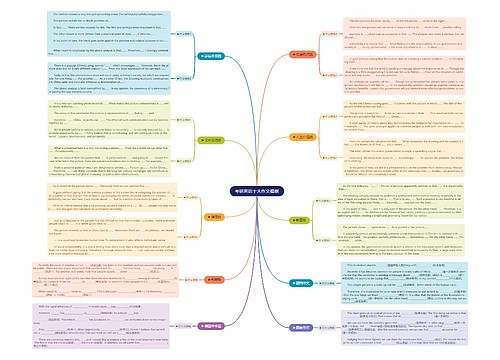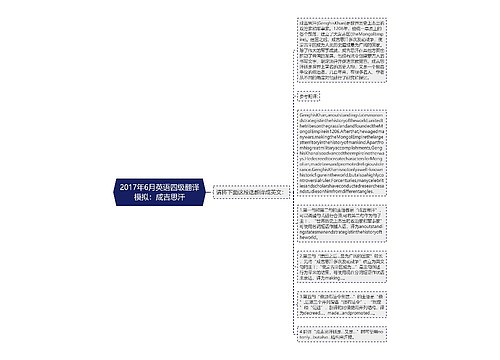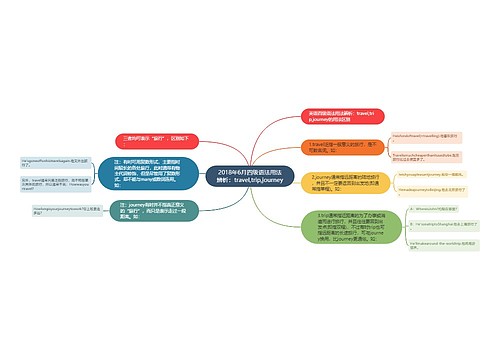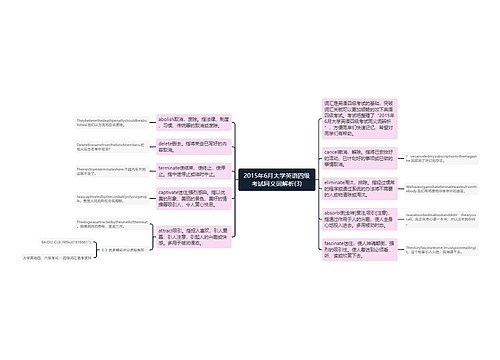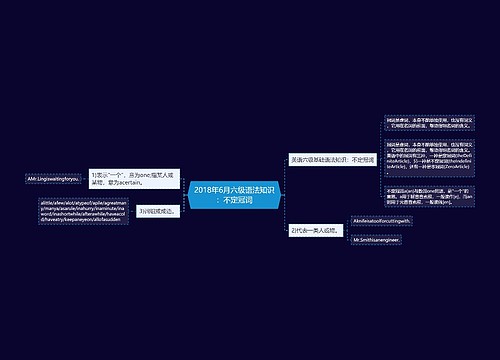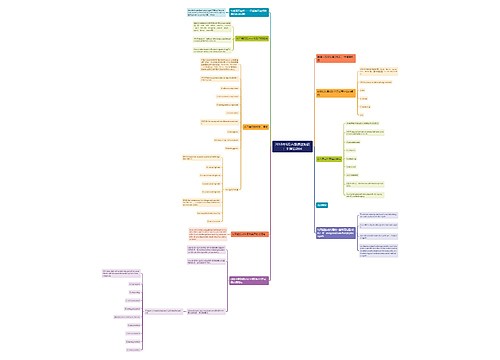1.现在完成时、过去完成时以及将来完成时之间的区别
1)现在完成时:
②语法意义及要点:
A.现在完成时表示一个过去开始的状态或动作持续到现在并可能继续持续下去,常同表示一段时间的状语连用。如sofar,uptonow,since,foralongtime等。
--Hehasworkedasateacherformanyyears.
--Uptillnow,nothinghasgonewrong.
B.现在完成时表示一个过去发生的对现在仍有影响的动作或事件。常与不确定的过去时间状语连用,如yet,just,before,recently等;也同表示频度时间状语连用,如often,ever,never,sometimes,severaltimes等;还可同包括现在时间在内的时间状语连用,如now,today,thismorning等。但不能同特定的过去时间状语连用(lastyear,in1997等)。
--IhaveneverlearnedJapanesebefore.
--Wehavebeenquitebusylately(recently).
C.在时间或条件状语从句中,当表示将来完成时的意义时,要用现在完成时来代替将来完成时。
--We’llstartat5o’clockifithasstoppedrainingbythen.
--IshallgotoseeyouwhenIhavefinishedmyhomework.
Note:行为不能持续的瞬间动词(InstantaneousVerb),如arrive,begin,come,go,start,leave,die,join等通常不能用于这一语法意义,即该类动词在现在完成时中不能与表示一段时间的状语连用。
--Hehasjoinedthearmyforfiveyears.(误)
--Hehasbeeninthearmyforfiveyears.(正)
2)过去完成时:
②语法意义及要点:
过去完成时表示某一动作或情况发生在过去某一时刻之前并持续到该时刻。
--DavidandJennyhadknowneachotherforalongtimebeforetheirmarriage.
--Theyhadgoteverythingreadybeforethepartybegan.
Note:与现在完成时截然不同的是过去完成时可以与表示具体过去的时间状语连用。
--Hesaidthathehadseenherthedaybeforeyesterday.
3)将来完成时:
②语法意义及要点:
将来完成时表示某一动作在将来某一时刻或将来某一动作之前已经完成或发生。
--Hewillhavegraduatedfromhighschoolbeforehisnextbirthday.
--Theshopwillhaveclosedalreadybeforeyougetthere.
1)表示状态的动词,如be,seem,appear,become,get等。
Heisbeingaused-cardealer.(误)
Sheisseemingalwaysabouttosmile.(误)
Sheseemsalwaysabouttosmile.(正)
2)表示感官感觉的动词,如see(看见),hear(听见),feel(感觉出),taste(尝出),smell(闻到)等。
Themedicineistastingbitter.(误)
Themedicinetastesbitter.(正)
Iwasseeingacarpassingbyourhouse.(误)
Isawacarpassingbyourhouse.(正)
3)表示拥有的动词,如have,own,possess,belong,contain,hold等。
Heisowningaluxuriouscar.(误)
Thebookisbelongingtoher.(误)
4)表示思想状况、态度的动词,如believe,think,know,understand,agree,approve,consider,expect,forget,guess,hesitate,hope,imagine,mean,realize,remember,suppose,trust,want,wish等。
I’mthinkingthatheisright.(误)
I’munderstandingyourfeelings.(误)
Iunderstandyourfeelings.(正)
5)表示情感、愿望的动词,如admire,appreciate,care,enjoy,like,love,hate,detest,regret等。
Heislovinghisdaughterverymuch.(误)
Heloveshisdaughterverymuch.(正)
I’mregrettingtosaywecannotcome.(误)
Iregrettosaywecannotcome.(正)
3.时态的呼应
时态的呼应又称时态一致(SequenceofTenses),指的是某些从句里的动词谓语时态必须和主句里的时态保持一致。
如果主句里的谓语动词是过去时态(过去时或过去完成时),那么从句的谓语动词时态也相应地要用过去时。时态的呼应主要发生在间接引语和宾语从句中,但其他从句有时也存在时态一致的问题。
--HeexplainedthathehadlearnedChineseformanyyears.(现在完成时变为过去完成时)
--Hesaidhehadbeencollectingmaterialsonthatsubjectforalongtime.(过去进行时变为过去完成进行时)
--Hetoldmethattheywouldhavecompletedthatprojectbytheendoftheyear.(将来完成时变为过去将来完成时)
虽然主句用了过去时等,如果从句表示的是科学真理、客观事实或某人(物)的经常性特点时,其时态可以不必遵守时态呼应的规则而仍用一般现在时。
--Galileoprovedthattheearthrevolvesroundthesun.
--Theteachertoldthestudentsthatknowledgeispower.
如果从句中有一个表示绝对过去时间的状语,就不必把一般过去时变为过去完成时。
--HesaidthathejoinedtheRedArmyin1933.
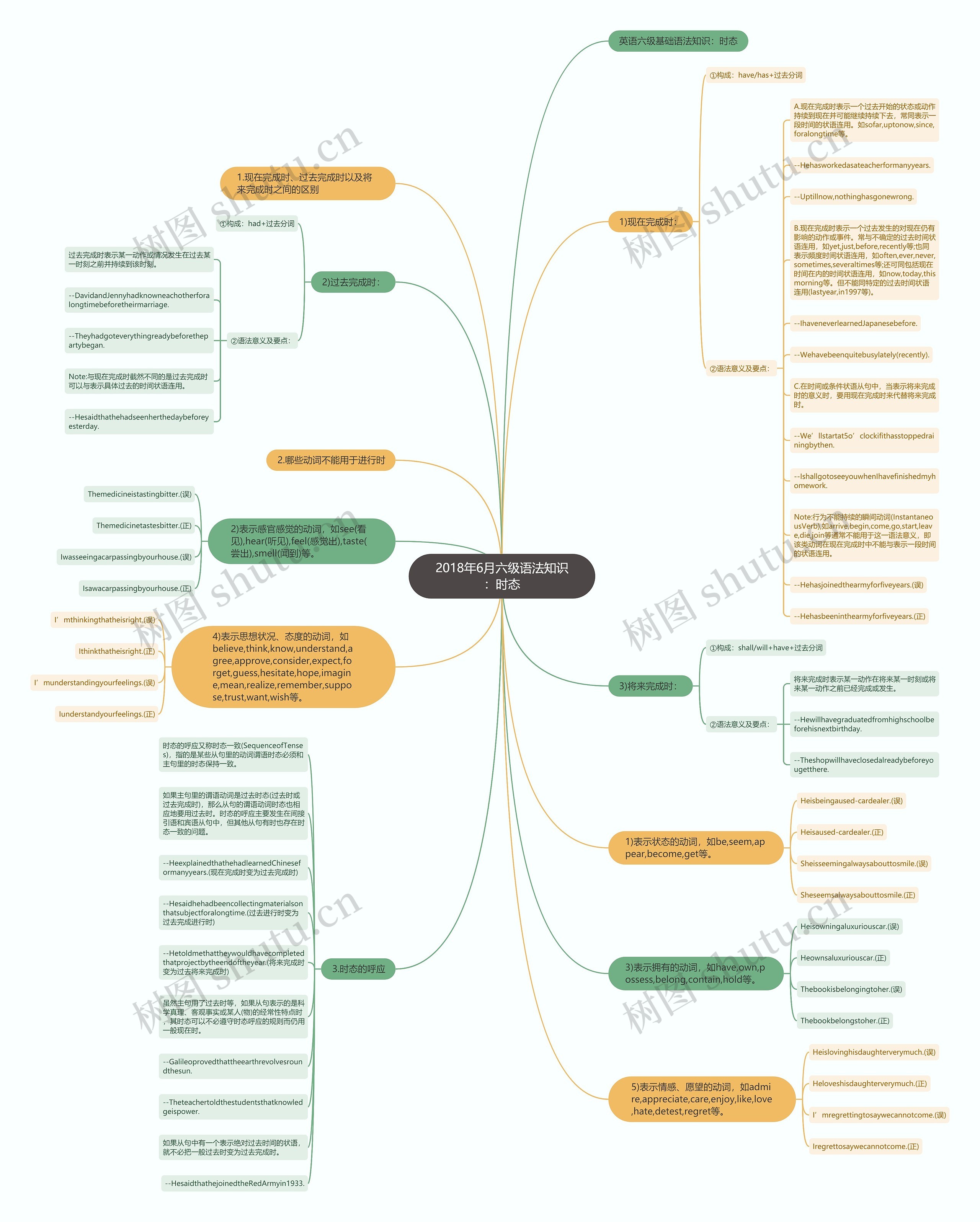
 U633687664
U633687664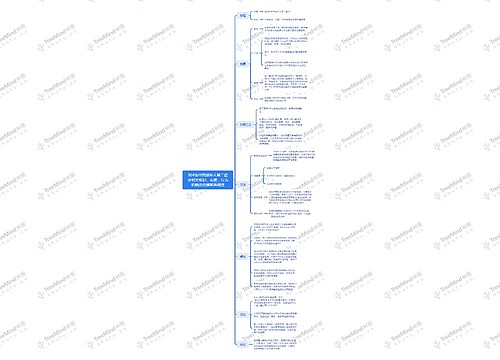
 U582121265
U582121265